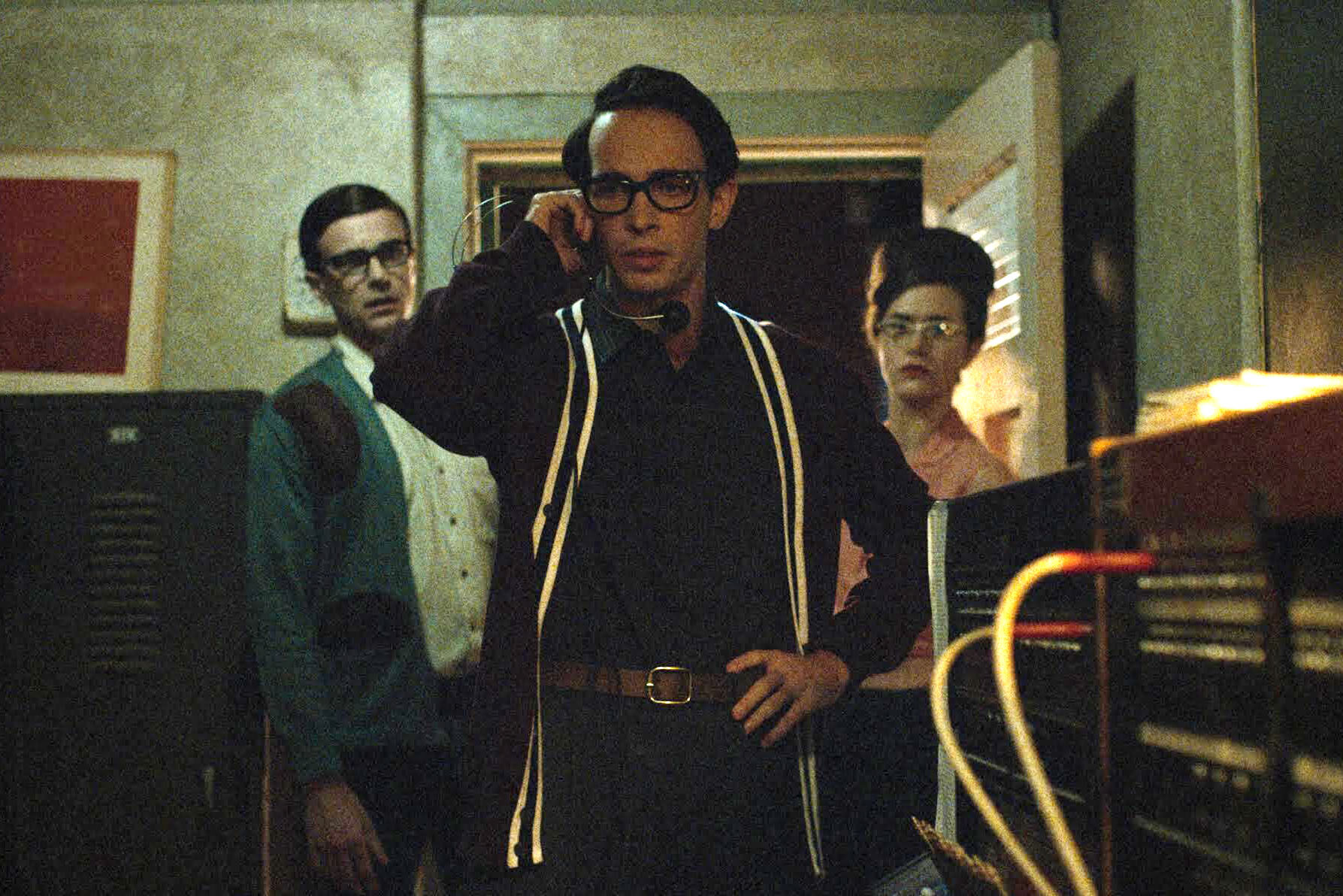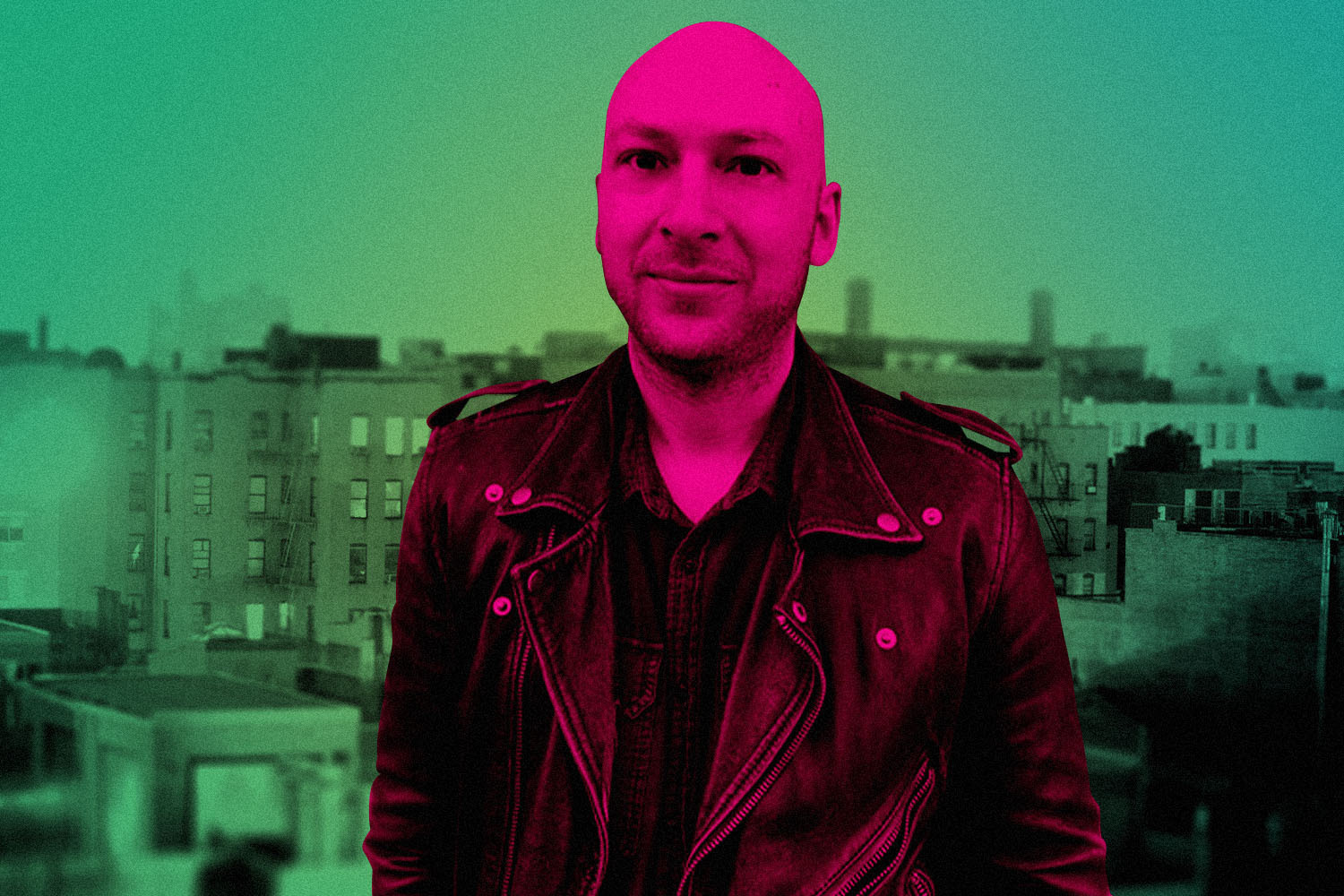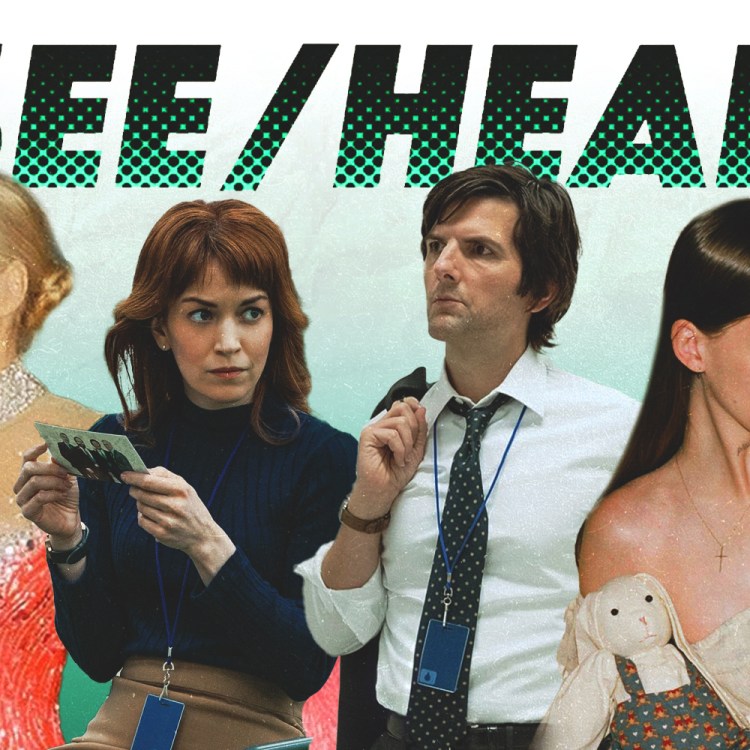Early in The Parallax View, reporter Joe Frady (Warren Beatty) chases after clues to a string of mysterious deaths in a remote fishing town. The locals don’t take kindly to the outsider asking questions, but the friendly sheriff intervenes and offers to take Frady to the spot where one of the victims drowned. Even though it looks like Joe’s relieved for a break in his story, he’s still on guard, nervously surveying the way people are looking at him and doubting the sheriff’s assuring grin. Something’s not right. When the sheriff takes Joe to the river, he pulls a gun, and it’s up to Joe to figure a way out of a conspiracy into which he’s suddenly thrust.
That heightened sense that no one can be trusted and that there are greater invisible forces at work help give Alan J. Pakula’s “paranoia trilogy” of the 1970s its moniker. Starting with Klute in 1971, followed by The Parallax View in 1974, and ending with All the President’s Men in 1976, Pakula’s films paint a bleak picture of a nation united in chaos. These movies reacted to the tumult ushered in by the Watergate scandal. The Pentagon Papers had revealed a number of ugly truths about the Vietnam War and exposed the existence of COINTELPRO, an illegal FBI surveillance program that intended to destabilize leftist political groups. One of Pakula’s films reckons with the ordeal explicitly: in All the President’s Men, Washington Post reporters Bob Woodward (Robert Redford) and Carl Bernstein (Dustin Hoffman) piece together the full story behind the Watergate breakin. The other two are more subtle in their approach. In Klute, sex worker Bree Daniels (Jane Fonda) quickly learns that she can’t rely on police protection to rid her of a dangerous stalker.
Although Klute gets its name from the detective played by Donald Sutherland, it’s Fonda’s sympathetic portrayal of Daniels that’s the real star of the movie. Through her character, we see not only the potential dangers of her line of work — abusive johns, drug addiction — but also the neglect and criminalization with which the police regard her mere existence. When Detective John Klute is trying to solve the disappearance of a friend in New York City, he connects with Daniels, since she’s one of the last people his friend contacted. She goes on to lead the virginal do-right detective through a world in which he has little jurisdiction.
The two characters’ isolation manifests in different ways. For Klute, it’s that almost everyone else has abandoned solving his friend’s disappearance. For Daniels, it’s that even in the face of harassing phone calls, physical assault and an unexplained break-in, the police refuse to help her. She lives in constant fear of the next time her peace will be disturbed by an unseen voice, a traumatic reminder of abuse by the unknown man behind it all. The pair find themselves alone in an uncaring world, leaning on each other in an uneasy alliance.
The theme of isolation is even more profound in Pakula’s follow-up, The Parallax View. Starring Warren Beatty as a local reporter in Seattle, The Parallax View is the bleakest entry of the three. If Klute is about people who fall in between the cracks of a broken system, The Parallax View emphasizes the helplessness of someone caught in a power struggle far bigger than he realizes. The film homes in on the fear that we are powerless in the face of an invisible, nefarious authority manipulating the lives of its citizens.
The Parallax View ominously begins with the assassination of a politician at the Seattle’s Space Needle. It’s a shocking sequence that echoes the anxieties of the ‘60s and the tragic assassinations of politicians and civil rights leaders. Years later, something is still amiss. There’s an official story, and then there’s the one Lee Carter (Paula Prentiss), a TV reporter, tells her ex-boyfriend and fellow reporter, Frady. She feels like she’s being followed and notices that fellow witnesses to the politician’s murder are dying. Naturally, she fears something may happen to her, which Frady waves off as an overreaction. When she turns up dead not long after, he realizes she was on to something much bigger than the “lone gunman” story government officials fed the public. Over the course of many twists and turns, he discovers the Parallax Corporation — an organization that orchestrates political assassinations — and tries to infiltrate their ranks, a perilous operation that ultimately does not pan out well for the intrepid reporter.
In this sense, The Parallax View has a lot to say about what shadowy practices corporations or corrupt officials will implement to maintain their cover. There’s something eerily resonant in the way that journalists and witnesses to crimes have been violently targeted by police or discredited by government officials today, in the weeks following the death of George Floyd. And unlike Pakula’s rosier follow-up, All the President’s Men, The Parallax View also explores the way the media can be manipulated by those giving false information. It’s something Frady tries to use to his advantage, by pretending to have been killed in a misreported boating accident. Ultimately, his news savvy isn’t enough to save him.
While All the President’s Men is based on the true story of how Woodward and Bernstein broke the Watergate news, it’s inherently much more optimistic about the power of the people against bad government. Over and over again, the two reporters are foiled and stymied by dead-end leads and uncooperative sources, yet their perseverance allows truth to win out. It’s more upbeat than the endings of either Klute or The Parallax View.
Regardless, Pakula’s fascination with isolation and paranoia heavily factor into the proceedings. Woodward and Bernstein are not readily hailed as heroes; in fact, they’re somewhat ostracized from most of the newsroom, and even most of the paper’s management. The closer they get to the truth, the higher the stakes become, reaching a climax when the pair realize they’re being bugged by unseen government spies.
Although this trilogy is made up of different movies and characters, All the President’s Men, Klute and The Parallax View have much in common. Their characters are ordinary Americans from everyday professions who find themselves in extraordinary circumstances. There’s a shared cynicism about their world that only grows as they learn the truth about power and who wields it, and a shared fear that the government is not doing enough, or even actively making life difficult for our heroes. In addition to these outside forces, they’re also dealing with internal feelings of helplessness and isolation, and they’re left to their own smarts and instincts to get them out of it. Some of these characters may write the headlines of history, while others will purposefully be silenced.
It’s too soon to tell what, exactly, art will say about this current tumultuous period in our country’s history. After all, it took a filmmaker like Pakula a decade to adequately unpack it. But until movies can be safely produced and writers have had the chance to process the ways in which the pandemic and police brutality have affected our relationship to government and authority, his “paranoia trilogy” may be the best reference point we have for grappling with this moment in American history. History, of course, has a habit of repeating itself.
This article was featured in the InsideHook newsletter. Sign up now.























